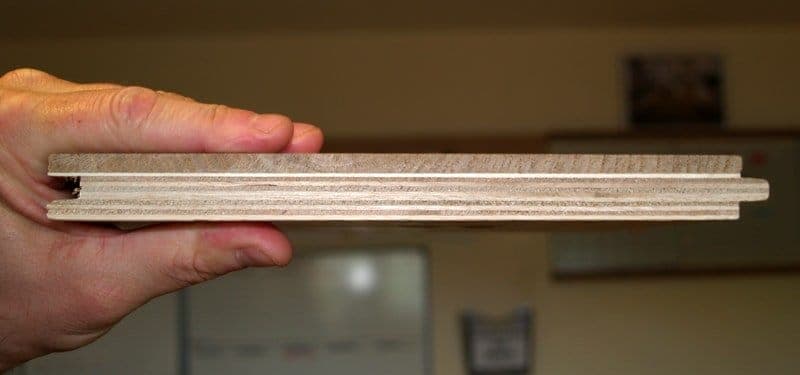
If you are looking for a wood flooring on a limited budget then, engineered wood flooring is the best option as it gives the feel of real wood and is a cheaper than solid wood flooring. It is actually made with a top layer of solid wood fused with several layers of plywood that are glued under heat and pressure. Depending upon the wood used in the top layer it can be classified as engineered hardwood flooring or engineered softwood flooring.
Dimensions:
The top solid wood has a thickness of 1.5 mm to 4 mm. Engineered boards have an overall thickness of 8 mm to 15 mm. The plank has a width ranging from 57 mm to 178 mm.
Types of Wood used in Engineered Wood Flooring:
Engineered wood comes with fewer choices of wood as compared to solid wood. Woods like red oak, hickory, and Brazilian Cherry are the most popular wood species for engineered hardwood flooring. Pine, spruce and cedar are generally used in engineered softwood flooring.
Properties:
- Durability: It has life of 30 to 40 years. As the thickness of real wood is less, during course of time the top layer gets dull and becomes weak. Also, engineered softwood flooring has less durability than engineered hardwood flooring.
- Dimensional Stability: Due to its multi-layer core engineered wood is dimensionally more stable than solid wood flooring. The adhesive bond between the layers allows only minimal changes due to expansion and contraction in extreme temperatures. A general thumb rule is to provide expansion gap of 1.5 mm on average of 12 m length and 8 m width.
- Resistance to moisture: Engineered wood flooring has good resistance to moisture, but after few years it becomes weak if it is in constant contact with moisture.
- Resistance to scratches: Pre-finished engineered wood flooring has quite good resistance to scratches as compared to solid wood flooring.
For a cost-effective option in a humid climate, engineered hardwood flooring can be installed in high-traffic areas like living room, while engineered softwood flooring can be installed in low traffic areas like bedrooms. Also, if one wants a feeling of natural wood, solid wood flooring can be installed in living rooms and bedrooms, while engineered wood flooring can be installed in kitchen area and basement.
Pros & Cons of Engineered Wood Flooring:
Pros/Advantages:
- It is a less expensive than solid wood flooring. Engineered hardwood flooring is more expensive than engineered softwood flooring.
- It allows installation of under-floor heating devices, which is not the case of solid wood flooring.
- It uses only a top layer of solid wood, saving natural wood. Also, the plywood layers use scrap wood minimizing waste material. So it is an eco-friendly option.
- Engineered wood flooring can be easily cleaned using a vacuum cleaner and mopping with a damp cloth.
- It is easy to install and can be easily glued down to the concrete subfloor.
- As it is dimensionally stable it can be used effectively in kitchen areas and basements.
- Engineered wood flooring generally comes in a pre-finished form which has a relatively high resistance to scratches and dents.
- It adds up to the value of the property.
Cons/Disadvantages:
- Engineered wood flooring can be sanded once or twice, after that the flooring has to be replaced.
- It is not recommended to install engineered wood flooring in wet areas of bathrooms.
- If the top solid wood layer is not glued properly to the plywood, cracks may develop because real wood and plywood respond differently to the temperature and humidity changes.
- Engineered wood flooring has to be re-polished periodically.
- Engineered wood flooring is noisy, so one should not walk with high heels on it.


































